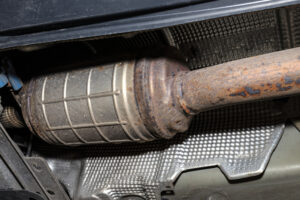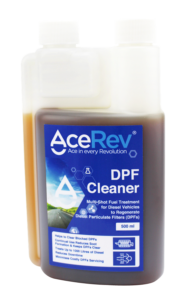Effective Way to Fix The DPF Problems

If you’re driving a Euro 4, Euro 5, or Euro 6 diesel vehicle, you may have faced frustrating Diesel Particulate Filter (DPF) issues such as reduced engine power, warning lights, and frequent regenerations. These problems are especially common in city driving conditions like Singapore, where stop-and-go traffic prevents proper DPF regeneration.
Common DPF Issues You May Be Facing
1. Reduced Engine Power (Limp Mode)
When the Engine Control Unit (ECU) detects a blocked DPF, it activates limp mode to protect the engine. This reduces performance, increases fuel consumption, and limits speed until the blockage is cleared.
2. White Smoke During Forced Regeneration
Excessive soot buildup triggers forced regeneration, a process where high exhaust temperatures burn off the soot. This releases white or pungent smoke, which can trigger alarms in enclosed areas or result in fines on the road.
3. Costly Repairs and Downtime
A neglected DPF often leads to engine shutdown, requiring towing and professional resets at workshops—costing hundreds or even thousands of dollars in repair fees.
4. Engine Oil Dilution
Unburned diesel can mix with engine oil during repeated regenerations, reducing lubrication and potentially causing engine damage that can cost SGD 10,000 or more to overhaul.
The Proven Solution – AceRev® DPF Cleaner
AceRev® DPF Cleaner is a Do-It-Yourself (DIY) multi-shot fuel treatment designed to clean and regenerate Diesel Particulate Filters in Euro 4, Euro 5, and Euro 6 engines. It helps prevent limp mode, reduces smoke emissions, and restores engine performance—without workshop downtime.
Why AceRev® DPF Cleaner Works Better
- European formulation improved for Asian traffic conditions (e.g., Singapore, Bangkok, Kuala Lumpur)
- Reduces soot burn-off temperature, allowing passive regeneration even in urban traffic
- Prevents soot buildup with regular use, minimizing costly forced regenerations
- Simple DIY use – just pour it into the diesel tank during refueling
By keeping your DPF clean, AceRev® ensures better fuel economy, smoother performance, and longer engine life.
How to Use AceRev® DPF Cleaner
- Shake the bottle well before use.
- Pour the recommended dosage into the diesel tank during refueling.
- Drive normally to allow the cleaner to circulate through the system.
- Repeat regularly (every 3,000–5,000 km) for consistent DPF health.
No downtime. No workshop visits. No DPF issues.
Recommended by Drivers Across Singapore
Thousands of fleet operators and vehicle owners trust AceRev® DPF Cleaner for reliable, emission-compliant performance. It’s compatible with all Euro 4–6 diesel vehicles and formulated for tropical climates.

Buy AceRev® DPF Cleaner Online
Worldwide Shipping available (excluding destination duties & taxes)
